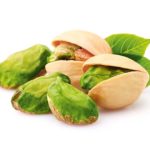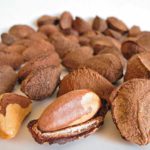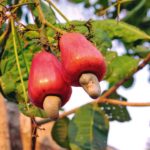8 nut trees that are good to grow in New Zealand

In our fast food world, growing your own nuts is a long-term plan, but these trees don’t need a lot of attention and having your own fresh, free nut supply is definitely worth a few years of waiting.
Words: Sheryn Dean
One of the benefits of owning a bit of land is having the space to grow large or multiple trees, which means we can grow our own nuts.
Home-grown nuts have a flavour of their own. When you harvest a fresh hazel, it’s nothing like what you can buy in a supermarket.
If you don’t believe in the superior taste, see if you can source some New Zealand nuts from your local farmers’ market or order some online. The freshness takes nuts from an ok food into the scrumptious category. Then, imagine having your own maintenance-free and dollar-free supply falling annually in the far paddock.
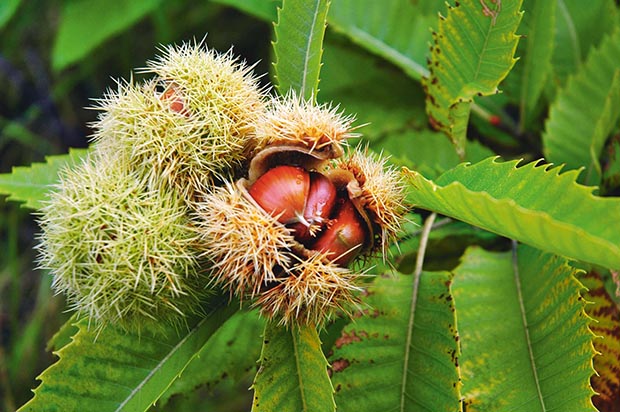
The sooner you plant, the sooner you will reap the benefits. Nut trees take 3-10 years to start producing, but once they do, they continue supplying a tasty, healthy crop for decades with very little maintenance. We’re very lucky that New Zealand is still free of most of the pests and diseases that affect many nuts trees in the rest of the world.
The trees themselves can be multi-purpose, serving as stock shelter, animal fodder, timber, windbreaks or riparian plants. Since nuts fall to the ground, the trees can be pruned up high above stock or vehicle height. Just give consideration to collecting the nuts in autumn and ensure that the ground below is suitable.
1. Chestnuts
The chestnut is well suited to New Zealand’s temperate climate and grows incredibly easily into a large, beautiful tree. We are lucky not to have blight and other diseases which affect it in other countries so it is pretty much maintenance-free. Prune off low branches to form a lovely shade tree, or alternatively chestnuts can be coppiced and used for fence posts as the timber is rot-resistant.
Don’t plant over an access way or well-frequented area as the nuts fall with a prickly burr (outside shell). Choose a site with good drainage too as chestnut trees can suffer from phytophthora (root rot) if grown in waterlogged soil.
They are large, long-lived trees that are a great shade and fodder option for stock. I have seen a flock of sheep enjoying the nuts and the nutshell, and the bark and leaves all contain tannins beneficial to all animals, especially alpacas.
Some varieties are sold as self-fertile but you will increase your production substantially if you plant a second tree of a different variety as a pollinator. They are wind-pollinated and at Christmas time have attractive long catkins releasing the male pollen. Trees take about four years to start producing.
I harvest with sturdy boots and a pair of kitchen tongs. The nuts are dried for a couple of days to increase sweetness, boiled, halved, scooped out and frozen. If you want to roast them in their shells, it’s important to pierce the skin to prevent them exploding during cooking.
Chestnuts have a low oil content compared to other nuts so can be slightly dry.
2. Walnuts
Walnuts are also large, easy-care and long-lived trees. They suit most temperate climates except high humidity which can cause blight on the nuts.
They like any well-drained soil (24 hours of waterlogging can kill a tree) and are generally pretty hardy. The downside is that the roots excrete a toxin called juglone which is poisonous to most plants, including grass. They make a wonderful shade tree but the juglone effect means they often overhang a mud patch in winter.
One tree produces enough for a family once it gets into full production, which can take 10 years for a seedling. A grafted tree will start to produce earlier but will cost more (grafting walnuts is a bit tricky). Some nitrogenous compost helps them to get established.
As well as the autumn crop, you can harvest the unripe nut, husk and all, at Christmas time to pickle them. Walnuts are great with cheese.
3. Pecans
These are the ultimate in large, long-lived nut trees. Pecans (Carya illinoinensis) can grow to 20m wide and live for 1000 years. They also make a fantastic riparian tree, liking the shelter of a valley, access to constant moisture and they even enjoying the occasional flood, although they won’t tolerate extended water-logging. Young trees are frost tender but are late to burst into leaf in spring and very cold-hardy once established.
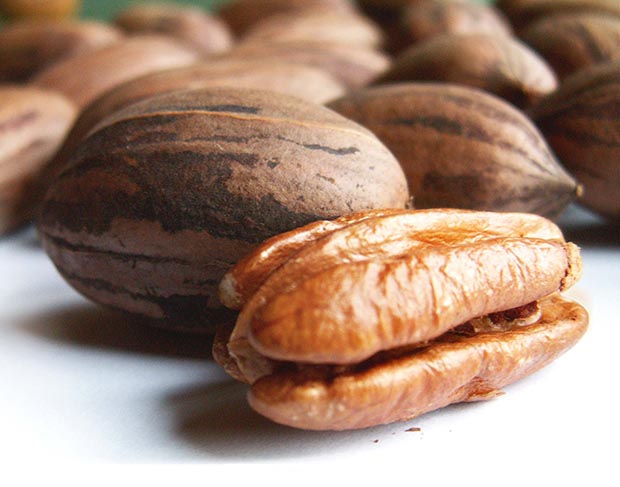
In their native Mississippi, where there are thousands of pecan trees, there is all sorts of pollen floating around on the wind. Here in NZ, there are only small pockets of trees and nut production is less reliable. Planting a selection of compatible grafted varieties increases your chances of producing a crop, and the more trees you plant, the better your odds.
They like ample minerals but NZ soils have plenty of nitrogen for them – don’t give them compost or any nitrogen which will encourage fast growth that will then break off in a big wind, something NZ pecans are prone to do.
4. Hazels
Hazels weren’t something I ate until a friend gave me some. They were so good I planted 10 trees.
Once again, they are a wind-pollinated species so you need at least two varieties to cross-pollinate – I went with a range of varieties to maximise production.
They grow exceedingly well in the cooler parts of New Zealand and can be left to form a multi-stemmed shrub or pruned to a single trunk. Sheep will keep the side-shoots under control, but left to grow they can be turned into walking sticks. They were also once used for making sheep hurdles (moveable frames to create pens).
The trees grow to about 4m, and their stunning autumn colours make them a useful and attractive boundary tree. Seedlings are available impregnated with truffle spores and if you have the right conditions, you’ll get yields of both crops.
The nut itself is my favourite cooking nut, delicate and flavoursome, but having some sort of cracking machine is essential to processing them in quantity.
5. Macadamias
Macadamia trees are for those in frost-free zones. I have seen them growing commercially in Nelson and, after several attempts, I have established one in the Waikato, but they are an Australian sub-tropical rainforest plant and prefer warm, sheltered conditions.
Once again, planting different varieties will increase production, although macadamias are pollinated by insects. Proteas are said to be a beneficial companion plant for them and it’s a very attractive combination.
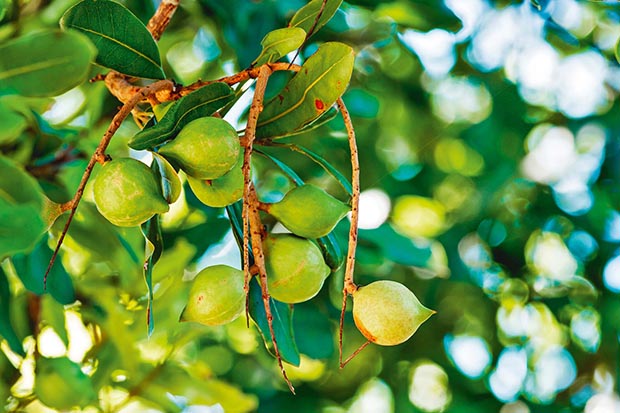
Varieties either drop or hold their nuts. Droppers are good if you have clean, dry ground underneath and collect the nuts regularly; otherwise go for ones you can pick.
Their evergreen foliage makes them a good screen and they can even be pruned into a hedge if desired. They can grow up to 10m tall, but are usually pruned to keep them within easy picking height.
Plant in spring, and harvest the nuts in early winter. Dehusk immediately and dry until you can hear the nut rattling in the shell when you drop it onto concrete.
6. Pine nuts
I enjoy cooking with pine nuts. I also enjoy the look of Pinus pinea, the pine tree that produces the pine cones that contain the nuts. But I don’t enjoy trying to extract the nuts from the pinecone, cracking their shell and separating the shell from the nut. This is a lot of work and kiwi DIYers have used everything from rotary hoes in a bucket to rolling pins and a towel.
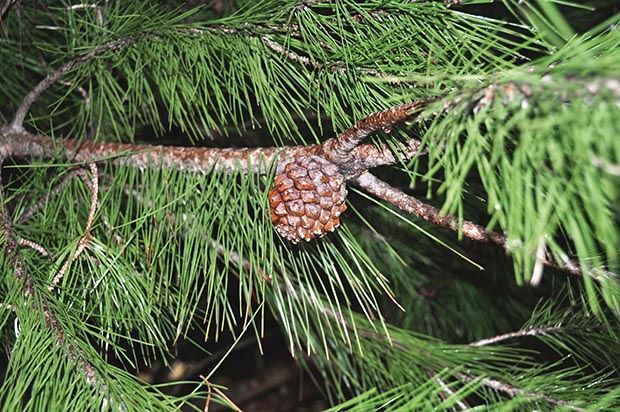
However the tree is long-lived (150 years+) and very resilient, handling dry conditions, high winds and salt spray. This is an evergreen conifer, growing to about 12m. Again, it can be purchased infected with Bianchetto truffle spores so you can try for an underground crop as well.
In optimum conditions they should start bearing at about six years old (cones take three years to form) but my singular tree has been noticeably reluctant to produce. Even though they are theoretically self-fertile, I have recently planted a second tree to see if that stimulates production.
7. Almonds
Almonds are really the internal kernel of a variety of peach and are similar in growth habits to a peach except they need a second variety as a pollinator and live longer (about 70 years compared to the peach’s average of 10).
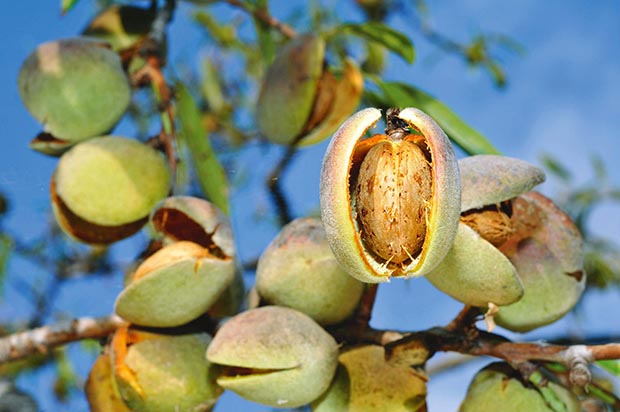
Humidity can cause the fungal diseases of leaf curl and brown rot (although they don’t seem as susceptible as most peaches) so in humid areas plant in a well-ventilated area or amongst your shelter belt.Like peaches, they prefer good, fertile soil and don’t like excessive dampness around their roots.
There is no reason why more almonds cannot be grown in New Zealand and trials are currently underway in the Wairarapa, Waikato and Nelson regions to identify superior varieties. Trees will grow up to about six metres, and they are the first in the orchard to welcome spring, putting on a display of blossom in early August.
8. Peanuts
A peanut is more pea than nut, and it doesn’t grow on a tree either.
The peanut plant is a 30-60cm high leafy annual best grown in the vegetable garden where it will fix nitrogen and send out a stem (called a peg) which needs a loose, well-drained soil to drill into to produce the seedpod.
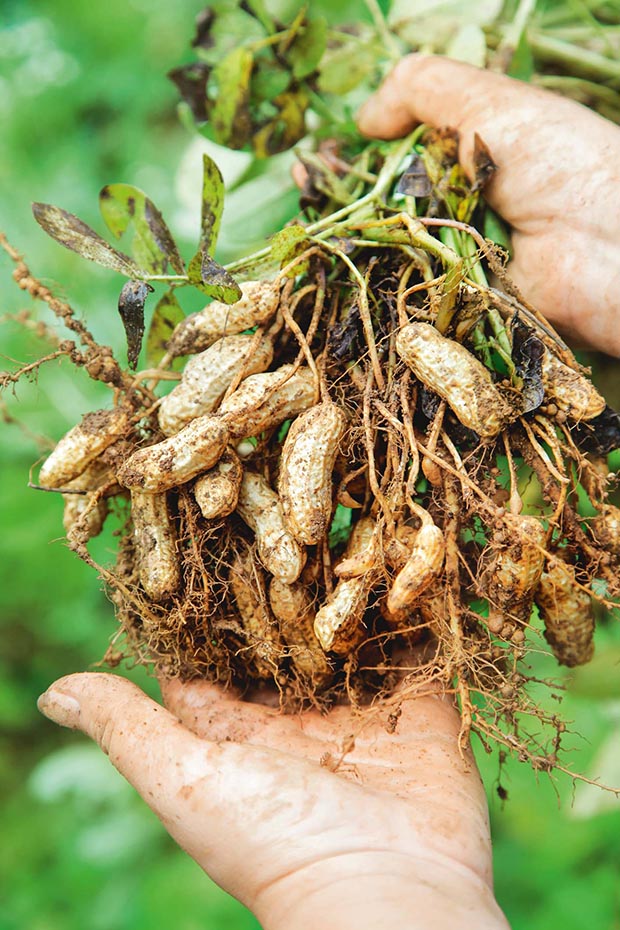
They are commercially grown in Australia and will readily grow here in a hot summer. They need full sun and 4-5 months of high temperatures to mature. Simply soak a fresh peanut (you can use raw, husked peanuts from the bulk bin at the supermarket) for a couple of hours and plant it as soon as the frosts have finished.
5 TIPS TO A GOOD NUT HARVEST
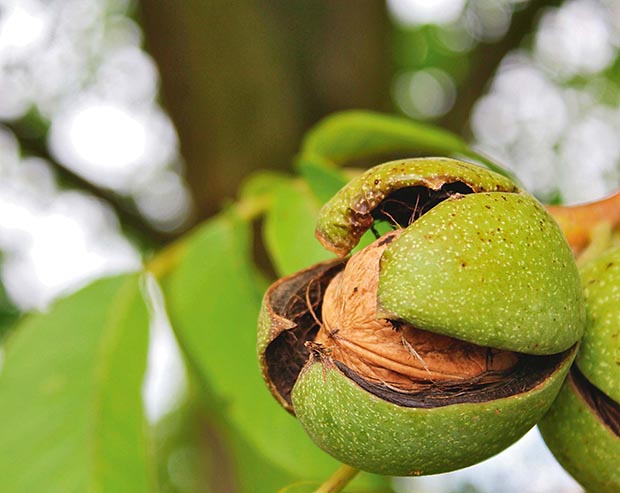
Shells make great kindling or mulch.
Nuts are ready in autumn and need to be collected daily as they drop. Leaving them on damp ground causes mould to grow, affecting storage and taste.
Spread nuts to dry in a shady but well-ventilated space – an old wire-weave bed frame is ideal.
Nuts can be stored in an airy, rat-proof container but can go rancid after a couple of months,
so the best way to keep them is to shell them and freeze the kernel to retain freshness.
The best home-made cracker I have seen is an attachment for a drill that is adjustable for a range of nuts. Google ‘drill cracker’. Shells make great kindling or mulch, and prickly chestnut burrs can be used to deter dogs from digging (and probably rabbits too).
THE NOT-LIKELY NUTS: PISTACHIOS, CASHEWS AND BRAZILS
There are pistachio trees growing in the South Island, but it is hard to source any trees in NZ, and getting them to produce is harder still. Pistachio trees are dioecious so you need a male and female (they are wind-pollinated) and they like seriously cold winters and fairly serious hot summers.
- Pistachios
- Brazil nuts
- Cashew nuts
Cashew trees grow in tropical climates. As far as I am aware, they are not available at all in NZ. Even if you could get one and grow it, removing the double shell and then the caustic liquid that surrounds it is quite an involved process – it’s much easier to grow and eat hazelnuts instead.
Brazil nuts need tropical heat, special pollinating insects, a lot of space (they grow to 50m) and 15 months to produce the coconut-sized fruit that contain between 10 and 25 nuts. If you want to harvest one you are going to have to travel to the Amazon rainforest, but don’t stand under a tree until the fruit has fallen – they can weigh up to 2.5kg.
SHERYN’S 4 TIPS FOR PLANTING NUT TREE
1. Reserve trees from your local nursery or go online to order them now – the best varieties are often in limited supply.
2. Decide where you will plant what and get any fencing or stock exclusion organised.
3. Dig a large hole and optimise your soil conditions around the immediate root zone.
4. Be ready to plant your nut trees when the cool and regular rains of winter start (except for macadamias – plant them in spring).
5. Check for noxious weeds, prune off unwanted branches and give some fertiliser annually, then wait for your nuts.
Love this story? Subscribe now!
 This article first appeared in NZ Lifestyle Block Magazine.
This article first appeared in NZ Lifestyle Block Magazine.
